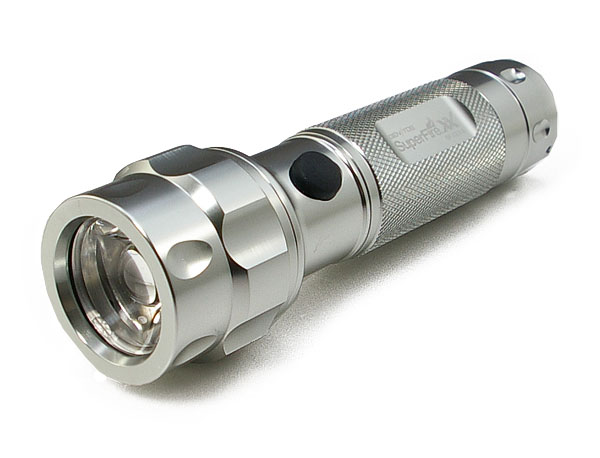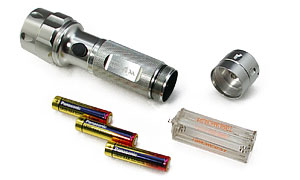In reference to what dr-ebert was talking about in terms of the rkcstr's driver having smd components, that really brought out my attention regarding the differences between the design of the Daedal DDL driver and rkcstr's driver as well as the MicroFlexDrive V4.
I'm thinking about DIY'ing a Driver as another huge project...an idea still. Don't know how that'll go but it would definitely be an interesting one, regardless of whether its finished or not!
In terms of rkcstr's driver (correct me if I'm wrong :can

: First of all, its supposed be a CCO design so it will regulate current output to diode regardless of the voltage input into the driver, so i'm assuming that the voltage output from regulator will be a fixed one making the power output of the diode more efficient in terms of lower heat dissipation. Here's the Micro-Drive Spec file =
MicroDrive V2 Spec File
1) Its a Double-sided laminate (with 3 PTH holes) & component assembly PCB, and uses surface mount devices (SMD) on the laminate. The DDL Driver in the tutorial seems more conventional and easier to understand. By the way is the laminate a Phenolic on the PCB?
2)
Components:
-
1 x Series Resistor R2 (You can choose 3 different types of resistors)
-
1 x Parallel Resistor R1 (2 different resistors you can choose)
(on the DDL driver, i only saw two 10hm resistors wired in parallel from VOUT to ADJ of the LM317 regulator)
-
1 x Regulator IC (TO-252 version of the LM1117). this i suppose is the SMT version of the
LM317. The T0252 seems to have two long legs the ADJ & the VIN & the VOUT is short. It is also requires two external resistors to function which i suppose are the R1 & R2 resistors. All about the regulator here =
LM1117)
-
3 x capacitors (Input Cap=16V 1uf SMT ceramic cap, Output Cap=10V 47uf SMT Tantalum cap, Shunt Cap=6.3V 10uf SMT tantalum cap.) He used Three different capacitors instead of just one like on the DDL driver with the 10microfarads 16V capacitor) Would it make a huge different to use all 3 of those instead of just one in a case where I want 400mA of current output and I'm using three 10440 batteries?
-
1 x MOSFET (P-type) field-effect transistor for reverse polarity protection as primary. (In the DDL Driver case, only one 1N4001 rectifier diode was used to accomplish that i figure, but in this case an additional MOSFET is put in place. Is the MOSFET the right component for reverse polarity protection in this situation because this p-channel type has an intrinsic diode or is it because of the difference in the conventional flow of drain current in which current flows out of the drain? I've heard that the P-type is better than the N-type for this kind of small power application because P-type has a more simple circuitry than N-type. I haven't learned much about MOSFETs so I gotta read up on it more...Info on DMP2215L-7 MOSFET =
HERE)
-
1 x Schottky diode for reverse polarity protection as secondary (never heard of schottky before...but its essentially similar in function to the 1N4001 diode that the DDL driver is using. i'm assuming the schottky is the SMT version of it.)
-
1 x Potentiometer (10ohm or 100ohm SMD pot. In the DDL Driver case its just a conventional type 100ohm 1/4watt pot i'm assuming..)
I'm a total Noob at this stuff so its gonna be a pretty steep learning curve for me...:thinking:
To fit a circuit board with all these components in a host, would it be feasible to use a conventional style PCB circuit board or would a SMT style of circuitry for the PCB be more feasible? I have actually never constructed a PCB before so would a ready made PLC circuit board be okay for this type of application? I know its quite tedious to construct one...






